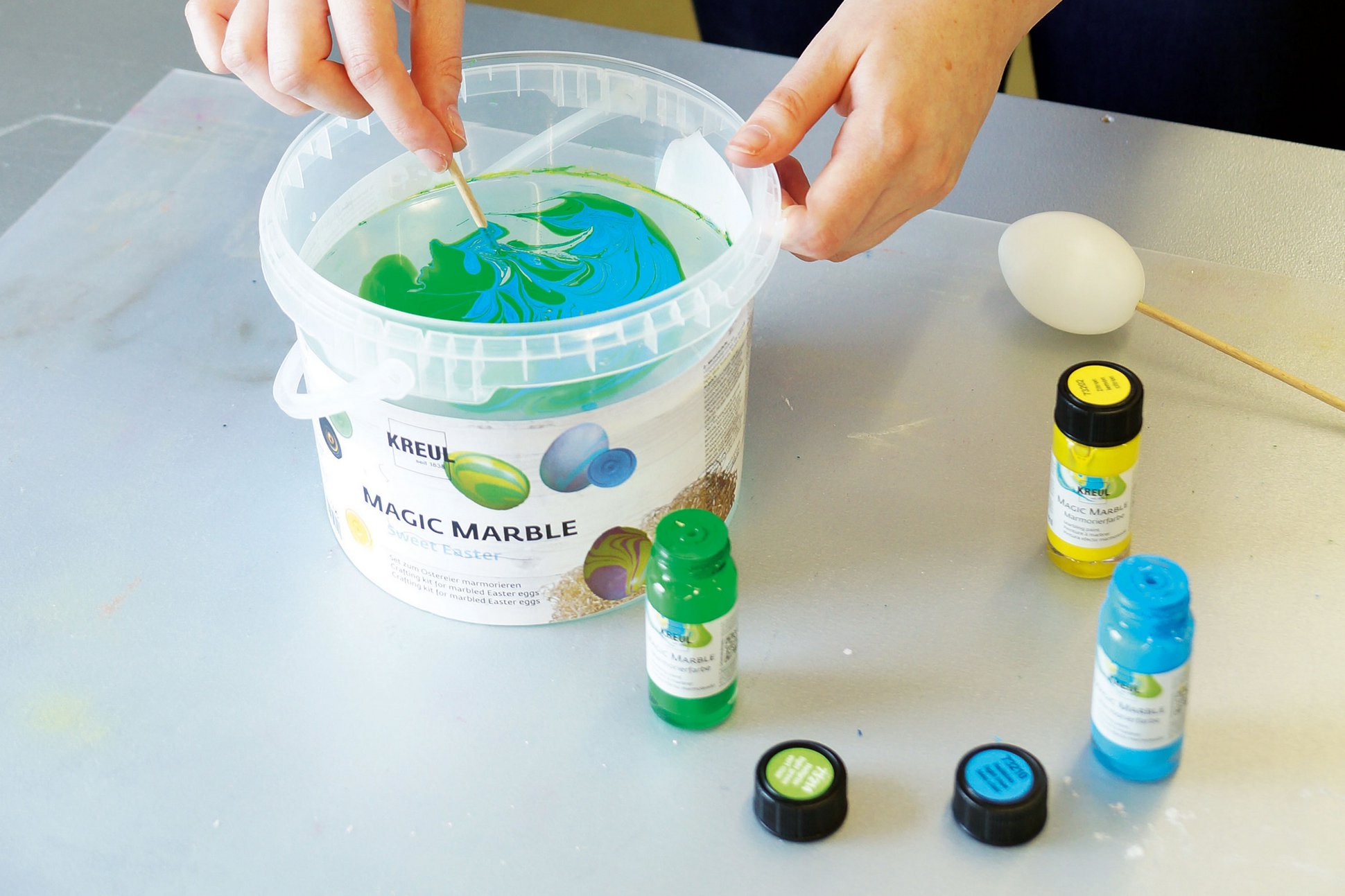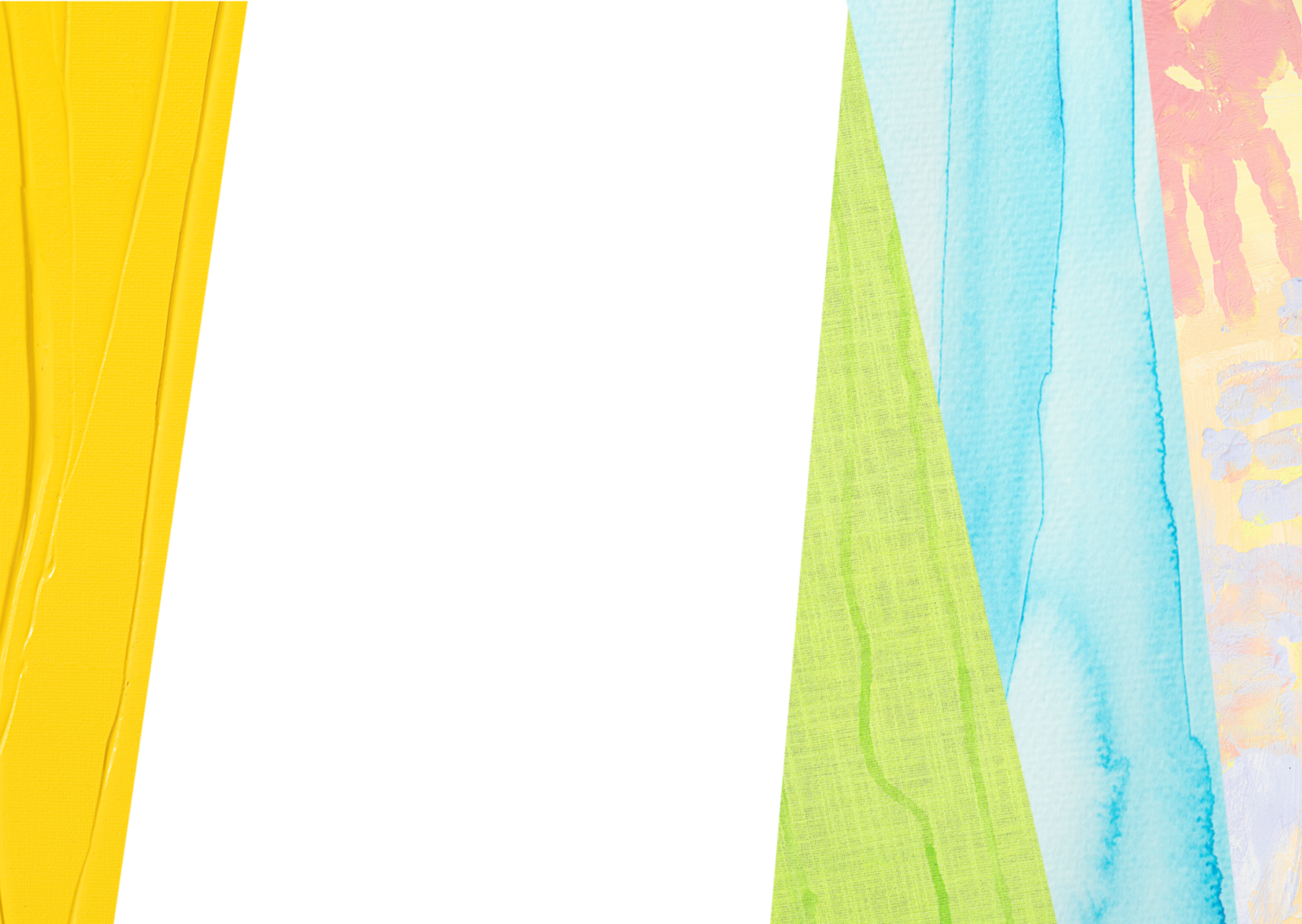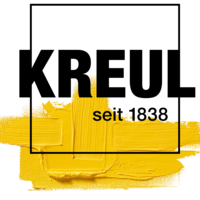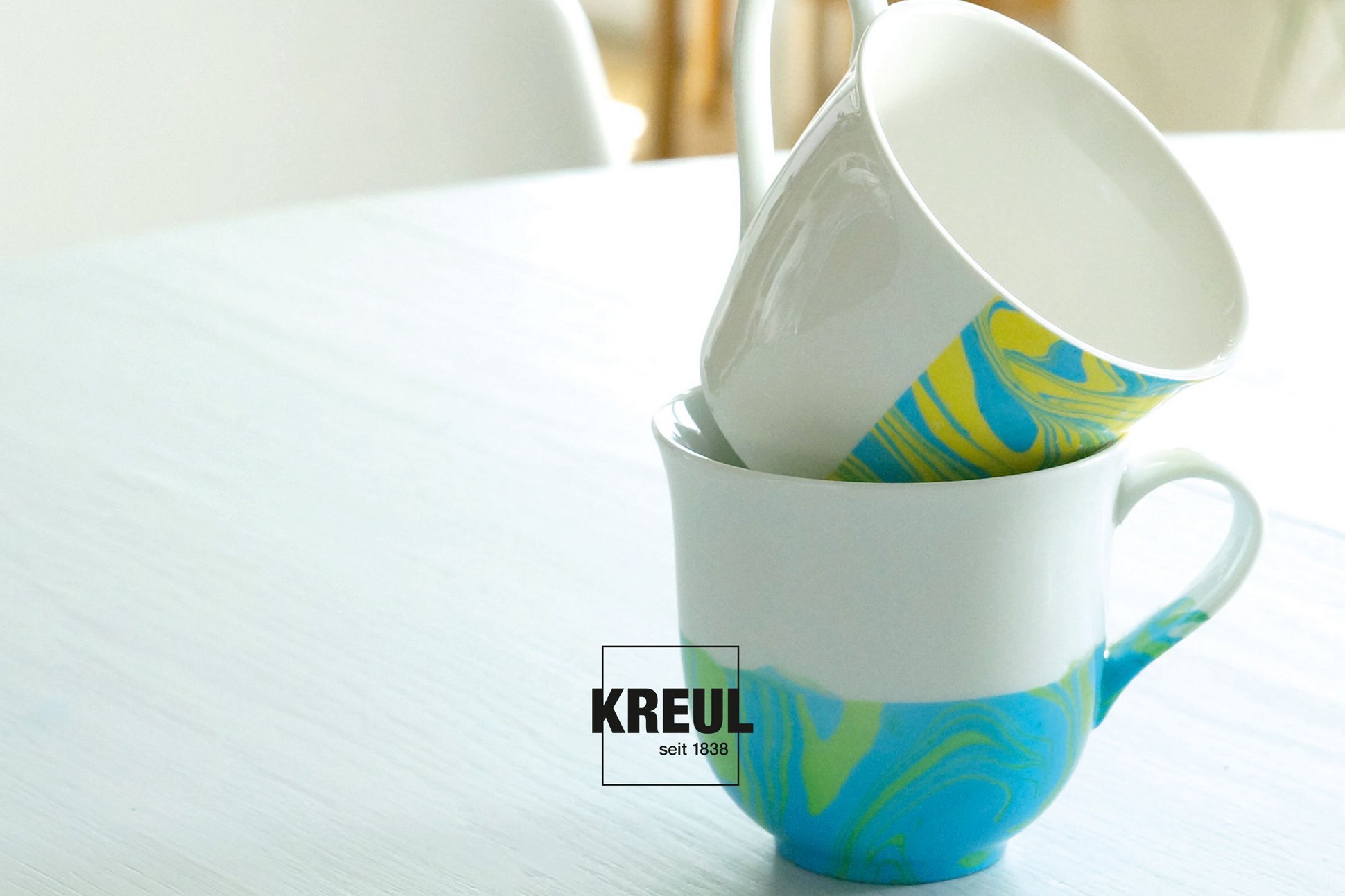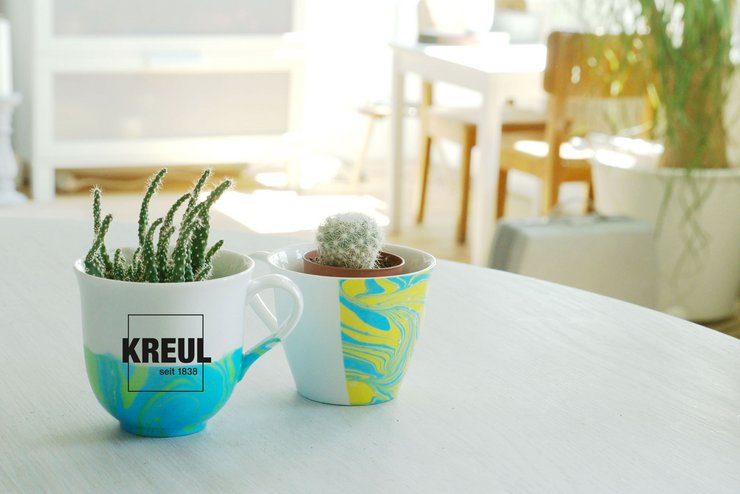
Marbled mugs – magical plant deco
04/15/2024 |- KREUL Marbling paint
- Ideen für Kreative
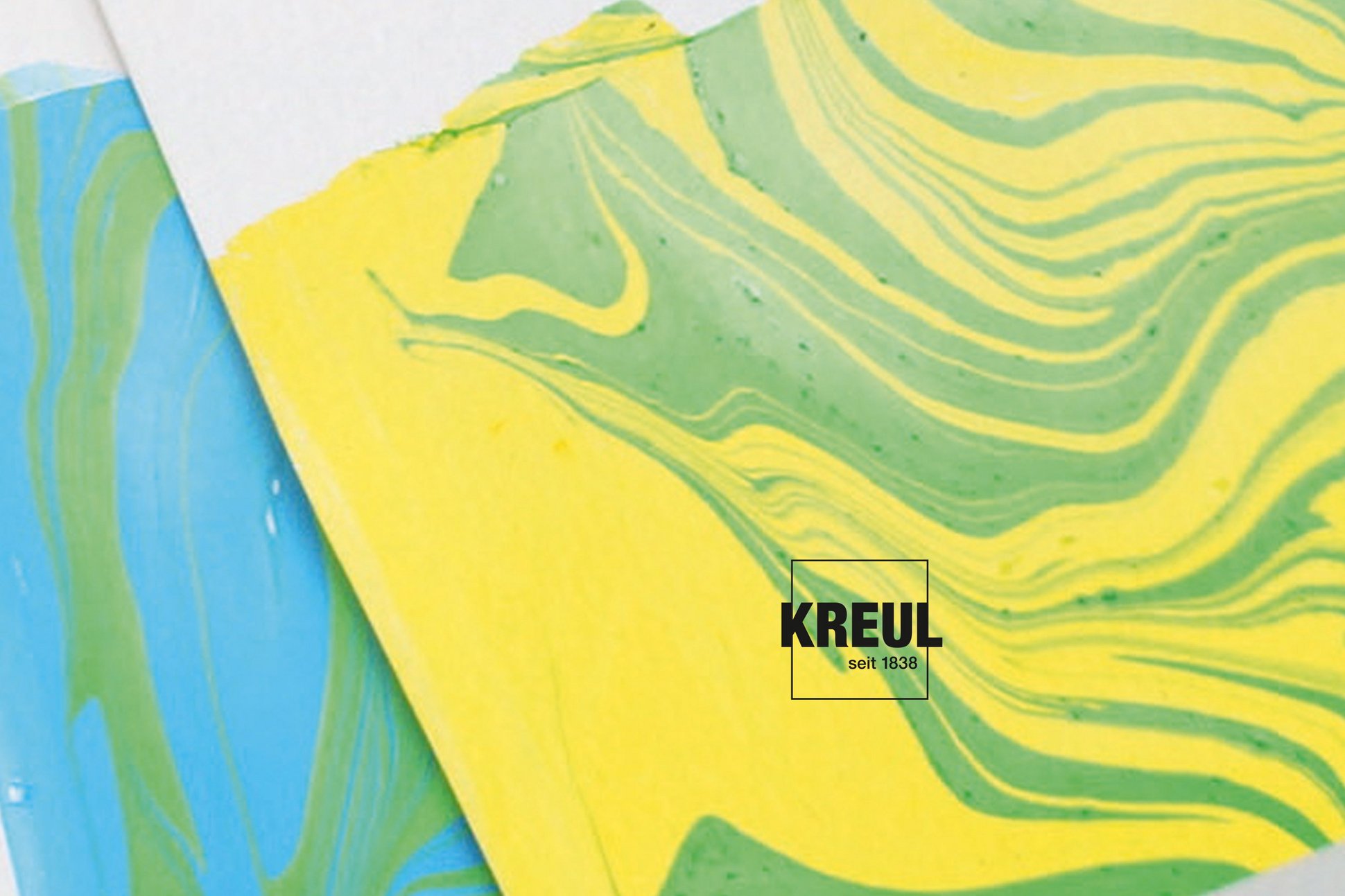
KREUL Magic Marble Marbling Paints: a play of colour for lots of different materials
What you’ll need to copy our DIY idea are KREUL Magic Marble Marbling Paints in the spring colours Citron, Light Green and Light Blue. Marble white ceramic cups and mugs, which you can then use as plant pots for cacti and other plants. It’s great that KREUL Magic Marble Marbling Paints are also suitable for ceramics like, for example, stoneware. You can also use them to decorate deco items made of wood, plastic, paper, metal, glass, polystyrene and terracotta. So you could dip a flower pot in the marbling bath if you like.
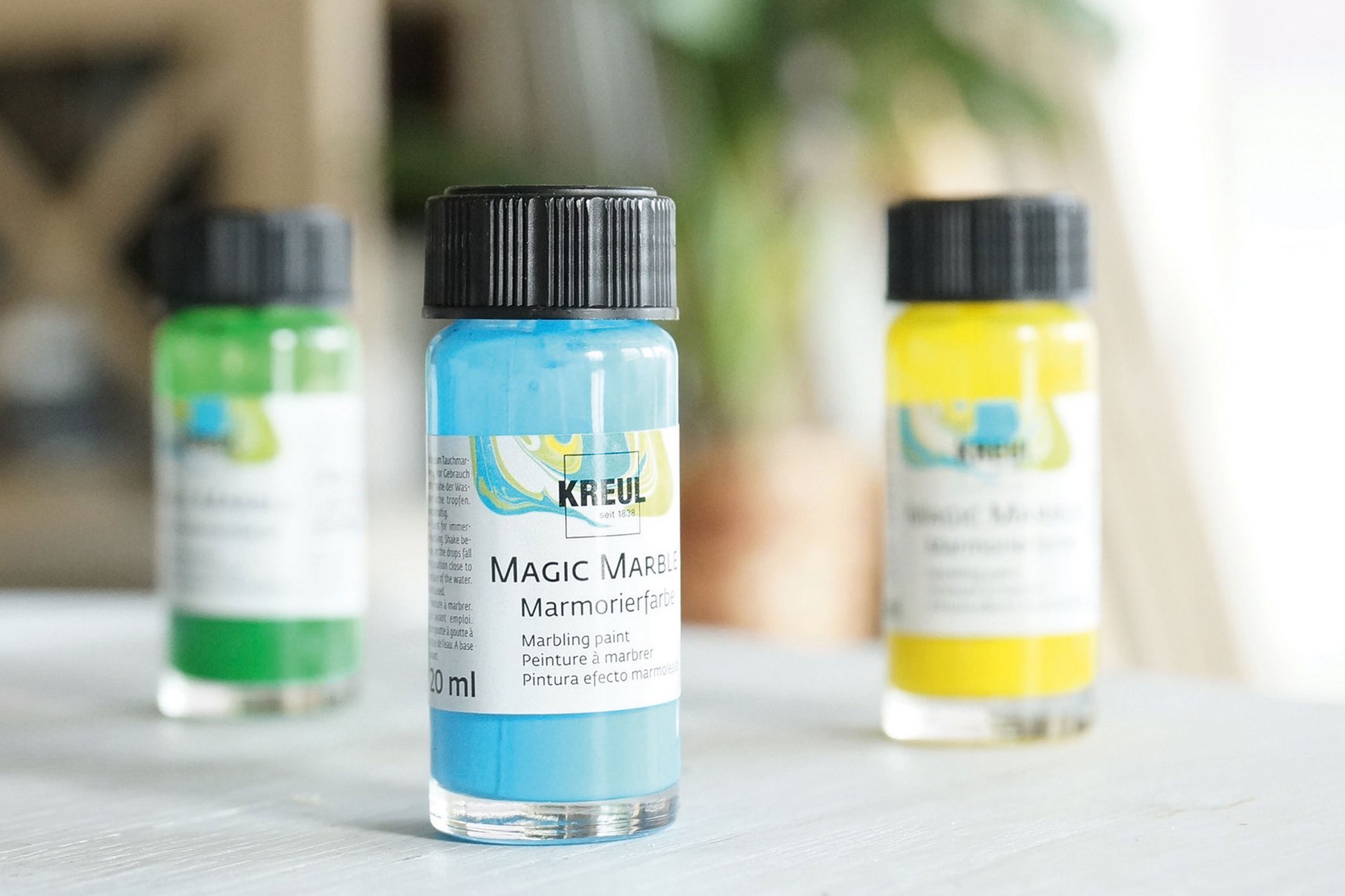
Step 1: Good preparation is everything
First, air the room well. If the air in the room is too dry, the paints dry too quickly, forming streaks. KREUL Magic Marble Marbling Paints contain solvents. If you find the smell unpleasant, just leave the window open while you are marbling.
Then fill a plastic bucket with tap water, a water temperature of 14 °C is best. Before you marble them, your white cups and mugs should be clean and free of any grease. That’s why we quickly wash and dry them by hand first. If you want to protect your hands againt paint stains during marbling, then put on some rubber gloves.
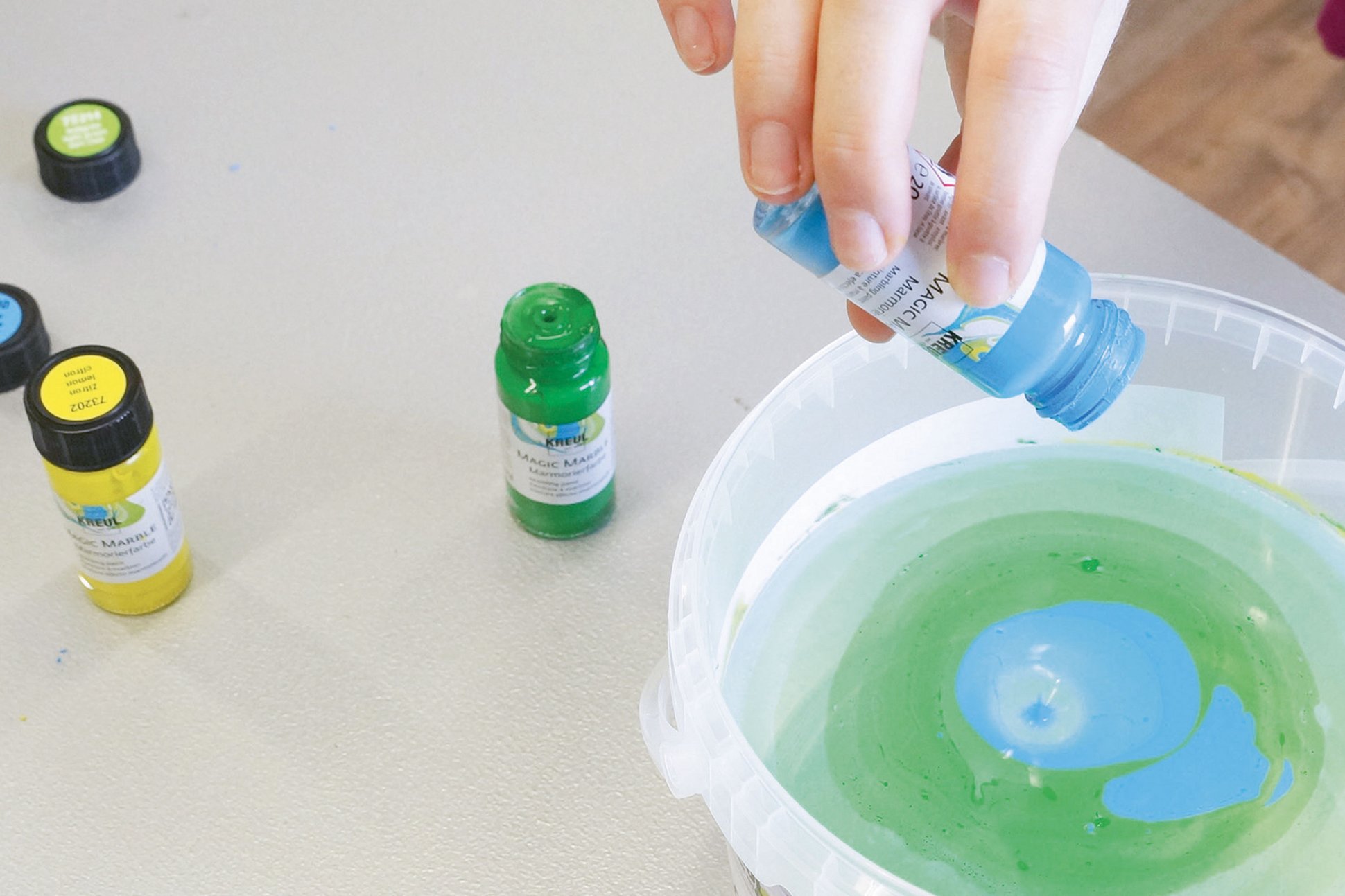
Step 2: Add the drops of paint
Now it's time for some action as you need to shake the jars of paint vigorously. Then trickle drops of the paints into the water, one after the other. The order in which you add the different colours does influence the pattern you get later! The first colour is displaced by the second colour, so the last colour you use will be the most prominent. We have marbled a cup planter in light green and light blue, adding light green first. In the second round of marbling, we added light blue and then lemon to the bucket of water.
We recommend that you always trickle the droplets of KREUL Magic Marble Marbling Paint from close to the water surface so that they don’t sink to the bottom of the bucket. This way, a film of paint is formed on the surface that we immediately swirl around with a wooden skewer stick. This makes for a totally individual play of the different colours in swirls and areas of block colour.
